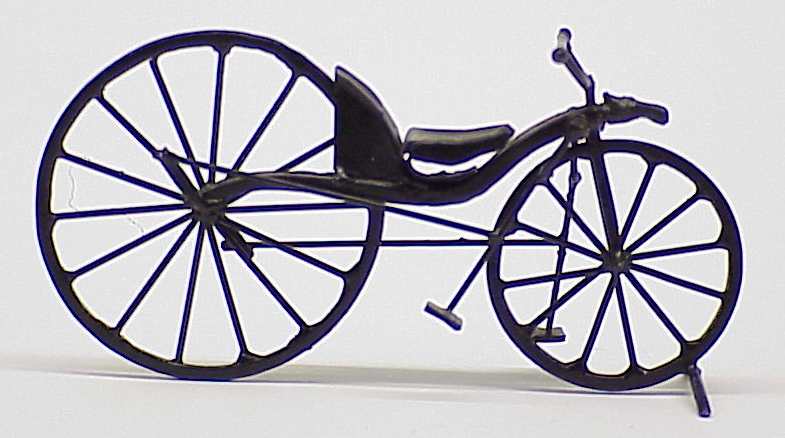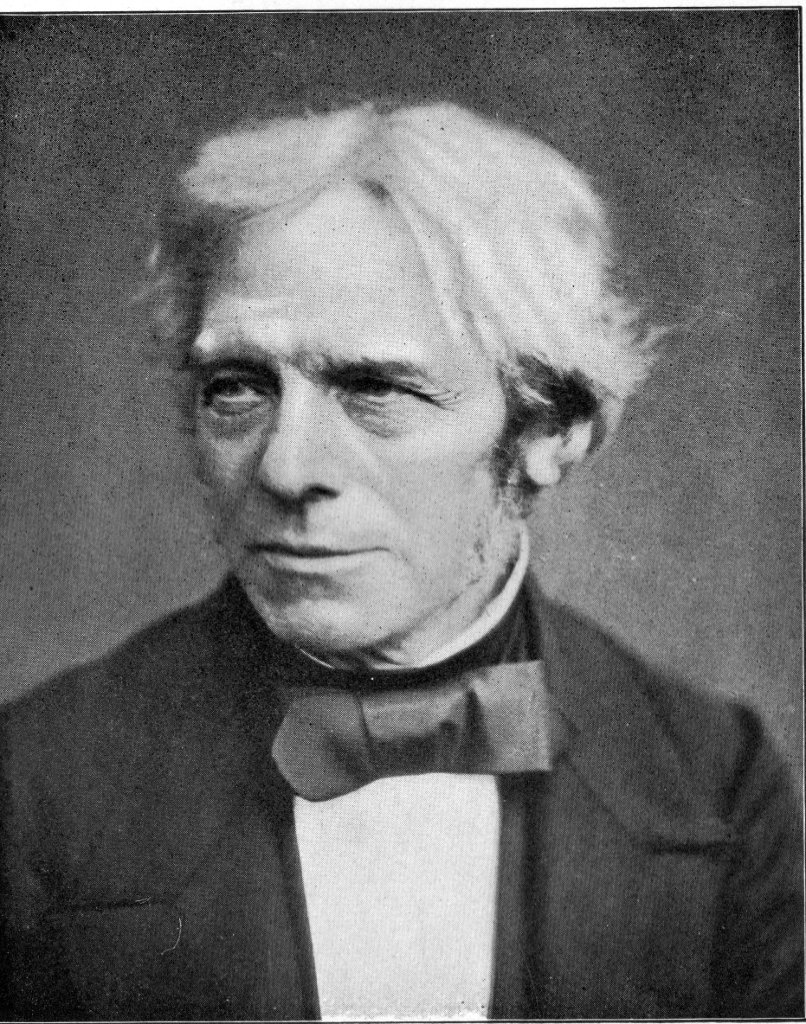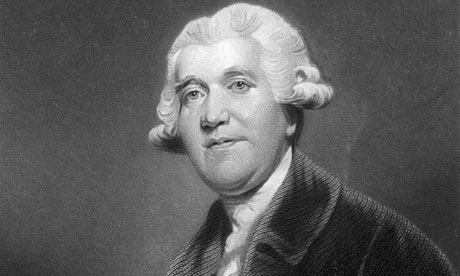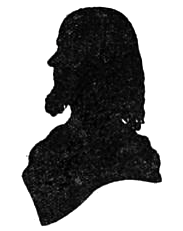Kirkpatrick Macmillan was a Scottish blacksmith who is credited with the invention of the pedal bicycle.
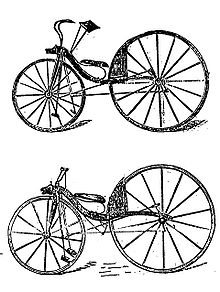
Thomas McCall’s first (top) and improved velocipede from the “English Mechanic” of 1869 – the first rear-wheel pedalled bicycle according to some historians
He was born in 1812 in Dumfriesshire, the son of a blacksmith. He did a variety of jobs as a young man, before settling into working with his father in 1824. At around that time he saw a hobbyhorse being ridden along a nearby road, and decided to make one for himself. Upon completion, he realised what a radical improvement it would be if he could propel it without putting his feet on the ground. Working at his smithy, he completed his new machine in around 1839.
This first pedal bicycle was propelled by a horizontal reciprocating movement of the rider’s feet on the pedals. This movement was transmitted to cranks on the rear wheel by connecting rods. The machine was extremely heavy and the physical effort required to ride it must have been considerable. Nevertheless, Macmillan quickly mastered the art of riding it on the rough country roads, and was soon accustomed to making the fourteen-mile journey to Dumfries in less than an hour.
His next exploit was to ride the 68 miles into Glasgow in June 1842. The trip took him two days and he was fined five shillings for causing a slight injury to a small girl who ran across his path.
He never thought of patenting his invention or trying to make any money out of it, but others who saw it were not slow to realize its potential. Soon copies began to appear for sale. Gavin Dalzell of Lesmahagow copied his machine in 1846 and passed on the details to so many people that for more than 50 years he was generally regarded as the inventor of the bicycle.
Macmillan was quite unconcerned with the fuss his invention had prompted, preferring to enjoy the quiet country life to which he was accustomed.
He died on 26 January 1878.
Invention of pedal driven bicycle?
According to the research of his relative James Johnston in the 1890s, Macmillan was the first to invent the pedal-driven bicycle.Kirkpatrick Macmillan on the BBC Biography pagesKirkpatrick Macmillan on The Scotsman’s webpageKirkpatrick Macmillan on the Great Scots webpages Johnston, a corn trader and tricyclist, had the firm aim, in his own words “to prove that to my native country of Dumfries belongs the honour of being the birthplace of the invention of the bicycle”.Janes Johnston:The first bicycle, The Gallovidian (Dumfries) #4, Winter 1899
Macmillan allegedly completed construction of a pedal driven bicycle of wood in 1839 that included iron-rimmed wooden wheels, a steerable wheel in the front and a larger wheel in the rear which was connected to pedals via connecting rods.
A Glasgow newspaper reported in 1842 an accident in which an anonymous “gentleman from Dumfries-shire… bestride a velocipede… of ingenious design” knocked over a pedestrian in the Gorbals and was fined five British shillings. Johnston identified Macmillan as that gentleman.
A plaque on the family smithy Courthill reads “He builded better than he knew.” Yet MacMillan lived in Glasgow and worked at the Vulcan Foundry during the relevant period around 1840, not at the family smithy Courthill (Dodds 1992).
EARLY HISTORY OF THE BICYCLE
- 1817 – Baron Karl von Drais de Sauerbrun of Germany rides his two-wheeled draisienne for nine miles, propelled by paddling his feet on the ground
- 1840s – Two-wheeled machines with rear treadle drives are built in south-west Scotland, Kirkpatrick Macmillan most often associated with them
- 1860s – Pierre Michaux and his son Ernest present their pedal-driven velocipede
- 1868 – The word bicycle comes into use in Europe to replace vélocipède de pedale
- 1870s – Hollow steel tubular frames and forks, quality ball bearings, tension-spoked wheels, steel rims, solid rubber tires, and standardised parts become common
- 1888 – the pneumatic tyre is introduced by John Boyd Dunlop, a Scottish vet living in Belfast
Kirkpatrick Macmillan: 200th anniversary of man who pioneered pedal cycles
 By Giancarlo RinaldiSouth Scotland reporter, BBC Scotland news website
By Giancarlo RinaldiSouth Scotland reporter, BBC Scotland news website
Maybe it is something in the sideburns.
Tour de France winner and Olympic hero Bradley Wiggins has made a bit of a trademark of his own fine facial hair.
And the man who many reckon paved the way for his endeavours also sported some impressive whiskers.
Kirkpatrick Macmillan, widely credited as the inventor of the modern pedal-driven bicycle, was born in the Dumfriesshire village of Kier on 2 September 1812.
The son of a blacksmith, he followed his father into the business and by his 20s had become fascinated with a new means of transport.
Two-wheeled “dandy horses” were growing in popularity but required the rider to push his or her feet on the ground in order to move them forwards.
“Macmillan tired of this crude style of propulsion, and after long and anxious thought he successfully devised a plan to get rid of it,” reported James Johnston of the Glasgow Cycling Club in the Gallovidian magazine of 1899.
“Many others had experimented in this direction, but all their attempts had failed.”
Along with a friend, he set to work in his smithy attaching pedals to the machine.
It took him about a year to complete and, it is thought that by 1839 he was happy with the finished product.
In his book about Macmillan, Devil on Wheels, Gordon Irving describes the scene as “dozens of villagers” gathered to watch its first run.
“To get it started he found it easier – until the cranks on his rear-driven wheel began to move at a fair speed – to mount his machine and get it going by striking the ground with his feet,” he said.
“The villagers watched in total amazement as he lifted his feet to the pedals and went whizzing down the rough highway, the first person anywhere in the world to ride on a velocipede, and propel himself along without touching the ground.
“The bicycle as we know it today had been born.”
It was not the lightweight creation which is nowadays produced at a rate of about 100 million-a-year.
Tipping the scales at an estimated 57lbs (about 27kg) it was a tricky beast to manoeuvre but Macmillan was soon growing in confidence in its use and gaining speed.
The sight of him flying through the countryside aboard his new means of transport earned him the nickname “Daft Pate”. He went as far north as Carronbridge, at the entrance to the Dalveen Pass, and as far south as Holywood. Soon he was able to travel the 14 miles to Dumfries in less than an hour. By 6 June 1842, reports suggest he was ready to undertake the trip to Glasgow.
“Women and children cheered him,” claimed his biographer.
“Others – many others – still ran indoors when they saw him approaching.
“Workers in the fields left their crops to line the roadsides and see this amazing, this amusing ‘man on wheels’ pass by.”
It was only as he approached the south side of Glasgow that problems arose. Newspapers of the time report an unnamed Dumfriesshire man cycling to avoid a crowd and striking a young girl. The rider was fined five shillings for the offence and many have concluded it must have been Macmillan.
Not everyone is completely convinced by this version of events, cited as proof of his inventor’s role. Alastair Dodds, in his book Scottish Bicycles and Tricycles, was not persuaded by the evidence.
“Whether indeed Macmillan was the inventor of the bicycle or merely a copyist may never be known but it is almost certain that the inventor was Scots,” he wrote.
“The sheer number of stories suggests that there must have been quite a cottage industry building various types in Lowland Scotland at this time.”
Writing in the late 19th Century, however, James Johnston had no such doubts.
“The word ‘bicycle’ means, of course, properly speaking, the first two-wheeler propelled and steered with the feet off the ground, and he was undoubtedly the first man to solve this problem and construct a really practicable bicycle,” he said.
A small plaque at the Courthill Smithy recognises Macmillan’s role in inventing the bicycle
Whatever the case, it brought him little fame or fortune during his life.
“He took out no patent, being too busy otherwise with his lucrative country business,” wrote Johnston.
“I hardly think you can blame Scotsmen – or the world – for not honouring or even remembering Kirkpatrick Macmillan, blacksmith and bicycle inventor,” added Irving.
“The man himself did not fully realise the importance of his work.”
Macmillan married in his 40s and had six children with his young wife Elspeth. Only two of his children would outlive their father, while his wife also passed away aged just 32.
Macmillan himself died in 1878 and a plaque at the Courthill Smithy sums him up in just six simple words taken from the poem The Problem by Ralph Waldo Emerson.
He builded better than he knew.
Credits:
Encyclopædia Britannica
http://www.bbc.co.uk/


